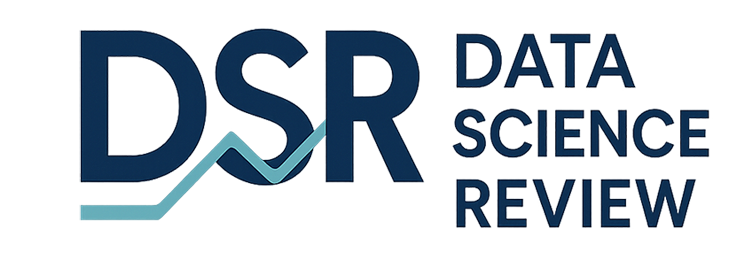For most companies, data science remains the final frontier that appears too hard to conquer. Even the attractive benefits such as optimized workflow and actionable marketing reports are not enough to change the mind of the companies.
The reason for this could easily be the obscure methodology of boosting ROI in data science and measuring the ROI of big data efforts overall.
Data science is rooted in mathematics and predictive analysis. There is nothing obscure about it. Boosting ROI in data science is something every company, despite its size, can achieve. If you want to boost your ROI in data science, you are in the right place.
Here are seven techniques that can help you do it.

Big Data science analysis business technology concept on virtual screen
Disclaimer: The views expressed in this article are solely the author's and are not necessarily reflective of the views of the owner of this website!
1. Establish Your Data Strategy
To boost your ROI in data science, first, you have to establish a clear data strategy. Your data strategy should reflect your business strategy. What are your goals and plans for the future?
These are just a few of the questions you have to answer. A data strategy consists of several important components. But for ROI purposes, we would like to get your attention to the most important one.
Data architecture – each business has its data architecture. While it sounds technical, data architecture is nothing more by a plan that defines how a company accesses, manages, and utilizes data.
To boost your ROI in data science, you will have to optimize data architecture by taking all data sources and mapping them into a data lake.
Once you are done mapping all the data sources and centralize them in a single database, you will have access to well-defined and reusable data. You will be able to leverage it more efficiently.

Workplace of the business person. Data science. Omnichannel
Learn to Ask the Right Kind of Questions
Data is there to solve problems. The ROI is data science will remain elusive as long as you keep asking the wrong questions. What is the wrong question? Any question that has nothing to do with resolving your business needs, challenges, and pain points.
Before taking a deep dive into your business data and spending your resources on data analysis, take a moment and write down the questions you want your data to answer.
Knowing exactly what you want from your data set will save you resources, time, and energy. When you know what you want from your data, it's easy to check whether it can answer it for you.
Data Processing Methods: Can Your Data Answer Your Questions
This technique follows the previous one. Now that you have your questions, you have to see whether your data can answer them for you. But, so far, you've only have collected your data. At the moment, it is just a pile of this raw material nobody can use.
To boost your ROI in data science, you have to choose a data processing method that can quickly bring you closer to the deliverables you are after. Data processing is a process of transforming raw data into a meaningful one.
Thanks to electronic data processing, you will able to quickly process your data no matter how big it is and consult the reports to see whether your data can answer your questions.
Going into a full data analysis cycle is expensive, and you don't want to do it if your data can not give you what you want.
That's is why having the ability to quickly process the data and check whether it can be used is an ROI-friendly technique.

Define the Purpose of Data Science Deliverables
The ROI of your data science efforts depends on what and how you will use data science deliverables. Finding things out just for the sake of finding them out yields no results. For instance, you want to see your customer purchasing trends. You find out that they spike during summer and go back to average values for the rest of the year.
Great, you now know that your customers tend to spend more at your establishment during summer. But if you leave it at this, we can't talk about the ROI of data science.
The most important thing to do to boost data science ROI is to define the purpose of data science deliverables.
For instance, you can cross-reference in stock and out of stock items during the summer to pinpoint products that went out of stock during this time. Extending stock can help you close more sales and thus increase revenue, which automatically reflects on ROI in data science.
Make Sure the Data is in an Optimal Format
We live in the age of social media platforms, forums, CRM suits, email, and other platforms. The number of data sources is huge. The problems are that these data sources, or platforms if you prefer, generate data in different formats.
When you have an inconsistent data format, you can't use it to generate reports and get actionable insights. Which yet again brings us to data processing. To boost the ROI in data science, you have to make sure that data is in an optimal format.
The deliverables of data processing methods depend on two stages. The first one is collection. During the collection phase, you have to standardize the data format.
And the second stage is preparation. To further process and analyze the data, you have to ensure that data sets are accurate. It's yet another opportunity to check the data format consistency.
With collection and preparation done right, data input becomes a straightforward activity, which translates into improved productivity and efficiency, which positively reflect ROI in data science.

Data Science, analysis. Internet and technology concept concept, banner and infographic on virtual screen
Choose a Conclusion Supported by Several Data Points
While the data cannot lie, it can easily be misinterpreted. Data misinterpretation leads to bad business decisions, which can often be devastating.
When using data to make an important business decision, you have to be extra cautious. Entrepreneurs are often biased and look at data analysis reports partially to identify data sets that go along with assumptions.
One data set is not enough to support a conclusion. You should always look for several data points before you make a conclusion and base actions on it. This is the only way to ensure high data science ROI.
As a bonus, you won't have to deal with pages upon pages of research personally. Staying short and concise, and pointing out data points that support your conclusions is something that your clients and shareholders will also value.
Have a Follow-Up Strategy in Place
And finally, to boost your ROI in data science, you must develop a follow-up strategy. The data provided you with all the answers, but these answers without action have no ROI potential whatsoever. Your next step is to make decisions based on data and implement them in your day to day operations.
Identify data sets that will be affected by the new changes. Track, record, and store the new data to be able to compare it against the old one.
These seven techniques will help you boost ROI in your data science. Devising a data strategy, optimizing data processing methods, and backing up your conclusions with several data points are the crucial points of this strategy.

